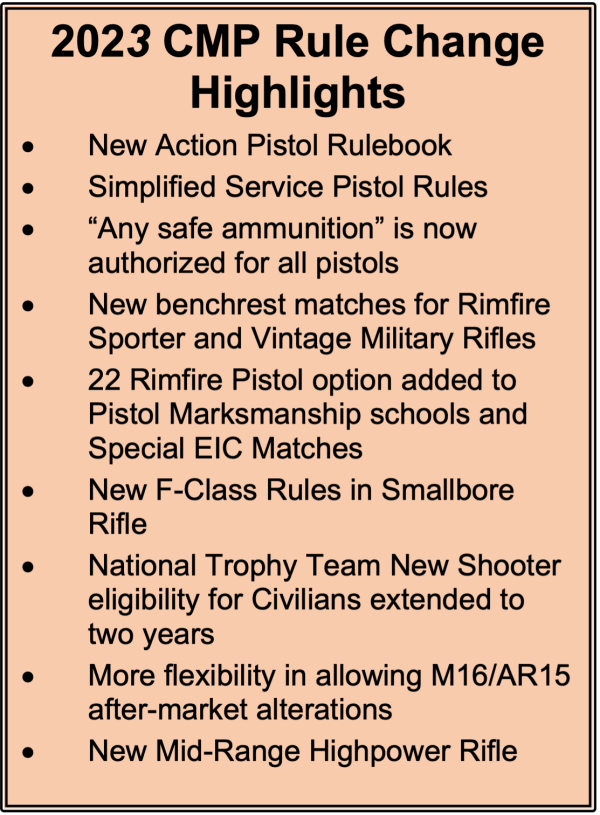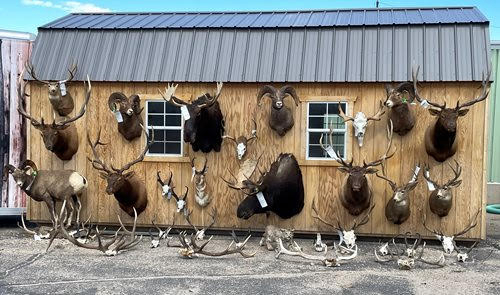Deer hunters: Take time to learn about season prospects, licensing changes before Nov. 15 arrives
GW: Here is what Michigan deer hunters are expected to know. No excuses!
 As opening day of Michigan’s firearm deer season on Saturday, Nov. 15, quickly approaches, hunters are busy preparing gear, scouting, choosing hunting sites, and making sure everything is in order for the day that some Michiganders revere as a state holiday.
As opening day of Michigan’s firearm deer season on Saturday, Nov. 15, quickly approaches, hunters are busy preparing gear, scouting, choosing hunting sites, and making sure everything is in order for the day that some Michiganders revere as a state holiday.
Amidst the flurry of preparations, hunters will also want to take some time to read up on hunting prospects and become familiar with new deer license options for the 2014 season. Read on for the pre-hunt information all deer hunters need to know this year.
Licensing changes
Those who have already purchased their 2014 deer license will know that with the recent hunting license restructure a change was made to simplify the deer license system by eliminating the separate archery and firearm season deer licenses and creating a single deer license.
The single deer license allows for the harvest of one deer in the archery or firearm seasons (a legal buck or doe during archery, or a legal buck during firearm or muzzleloader). Hunters may choose between the new single deer license or, as in the past, can purchase a combination deer license, which includes one regular and one restricted deer tag.
 The advantage to the single deer license is simple: A hunter who goes afield during archery season but does not harvest a deer does not have to buy an additional license to continue hunting in firearm or muzzleloader seasons. But the disadvantage is simple, too: Once you fill the tag, you are finished hunting for a buck for the season. Although an antlerless license could be purchased where available, an additional buck license would not be an option.
The advantage to the single deer license is simple: A hunter who goes afield during archery season but does not harvest a deer does not have to buy an additional license to continue hunting in firearm or muzzleloader seasons. But the disadvantage is simple, too: Once you fill the tag, you are finished hunting for a buck for the season. Although an antlerless license could be purchased where available, an additional buck license would not be an option.
“It’s important for hunters to understand this change so they aren’t disappointed later in the season,” said Russ Mason, Michigan Department of Natural Resources Wildlife Division Chief. “If you purchase the single deer tag, you have more flexibility for hunting multiple seasons, but once you fill that tag you’re done. Hunters who hope to harvest two bucks would want to purchase a combination license instead of the single tag.”
If a hunter has purchased a single deer license and hasn’t used it – and would rather have the opportunity to take two bucks – it is possible to void it and get a combination license instead by returning to the location where the license was purchased.
The combination license, with two tags that can be used on bucks (or antlerless deer during archery season), comes with a “regular” and a “restricted” tag. The restricted tag may be used to harvest a buck only if its rack has a minimum of four antler points on at least one side. This tag is sometimes referred to as the “second tag,” but it does not have to be reserved for a second deer and can be used first if the deer qualifies.
 The regular tag included in the combination license is good for any legal buck, the definition of which changes depending on what part of the state a hunter is in. For example, in the Upper Peninsula and most of the northern Lower Peninsula, the regular combination tag is subject to antler point restrictions and can only be used to harvest a buck with a minimum of three points on a side.
The regular tag included in the combination license is good for any legal buck, the definition of which changes depending on what part of the state a hunter is in. For example, in the Upper Peninsula and most of the northern Lower Peninsula, the regular combination tag is subject to antler point restrictions and can only be used to harvest a buck with a minimum of three points on a side.
The single deer license is also subject to antler point restrictions in certain Deer Management Units, including in the northwestern part of the northern Lower Peninsula. Full details on antler point restrictions can be found on pages 32-33 of the 2014 Hunting and Trapping Digest.
Deer hunting prospects
As for the hunting prospects, DNR wildlife biologists are predicting a fairly typical season with one exception: the Upper Peninsula. In the U.P., hunters should be prepared to see and harvest fewer deer.
“We had a very difficult winter this last year, the second harsh winter in a row, so our deer herd is down from where it has been,” said Upper Peninsula wildlife biologist Dave Jentoft. “Opportunities are going to be reduced somewhat, without a doubt.”
In response, the DNR significantly decreased the number of available antlerless deer licenses in the U.P., with no public land antlerless tags available across the entire region, and private land antlerless licenses available in only three Deer Management Units in the southcentral U.P. where deer numbers tend to be higher.
 “In the winter of 2012-13, the issue was a late spring,” Jentoft said. “We had a lot of snow cover from February until well into the spring season. Then, during the 2013-2014 winter, we had snow on the ground and sub-zero conditions from November all the way through spring.
“In the winter of 2012-13, the issue was a late spring,” Jentoft said. “We had a lot of snow cover from February until well into the spring season. Then, during the 2013-2014 winter, we had snow on the ground and sub-zero conditions from November all the way through spring.
“I think it’s going to be a challenging deer season. The bucks – especially younger bucks, the 1 ½-year-olds – are not going to be as plentiful as they were in past seasons.”
In the northern Lower Peninsula, things are looking “pretty darn good,” said wildlife biologist Ashley Autenrieth. “We’re seeing a lot of deer movement and good reproduction – a lot of healthy fawns and a numbers of twins as well.”
Despite a long, cold, snowy winter, the northern Lower Peninsula herd held up well, Autenrieth said, “but we might be seeing a little bit smaller rack size and a little smaller body size than they did last year.”
Helping to support the herd is the excellent production of hard and soft mast this year in the northern Lower Peninsula.
 “We appear to be in the midst of a bumper acorn crop this year, so hunters should be looking for those acorn-producing trees. And hunters should also be on the lookout for those 2 ½-year-old bucks. Hunters should be seeing them more often beginning this year and we’re anticipating a pretty good season.”
“We appear to be in the midst of a bumper acorn crop this year, so hunters should be looking for those acorn-producing trees. And hunters should also be on the lookout for those 2 ½-year-old bucks. Hunters should be seeing them more often beginning this year and we’re anticipating a pretty good season.”
In southern Michigan, deer numbers should be very good, even improved in some areas. Deer did not seem to suffer significant winter mortality, although the effects of the tough winter may be visible when looking at antler condition, said Brent Rudolph, the DNR’s deer and elk program leader.
“They made it through the winter well,” he said. “I thought we might see some impact on deer body conditions, but looking at what we’ve seen at check stations so far this fall the deer look like they’re in good shape. Antler development might be suppressed though. That’s typically what we see after a hard winter when preferred food sources become harder to find.”
Although the deer herd in southern Michigan made it through the winter without much impact, the region’s deer herd still continues to recover from the 2012 outbreak of epizootic hemorrhagic disease (EHD). The disease, which is caused by a biting insect, typically during droughty conditions, “hit us hard two years ago,” Rudolph said.
“Since the EHD die-off, we’ve been monitoring deer in one of our most heavily hit outbreak areas and, as expected, deer numbers seem to be up a bit, but it will probably be a few years before they return to levels prior to EHD,” he said.
 Accordingly, antlerless licenses were reduced in the southern part of the state this year as well.
Accordingly, antlerless licenses were reduced in the southern part of the state this year as well.
“In southern Michigan, deer numbers are down a bit and are closer to where we want to see them overall, so it makes sense to cut back on antlerless permits,” Rudolph said. “In the specific areas most affected by EHD we’d like to see numbers rebound a bit more and will continue to manage for that on a localized level.”
One more item Rudolph made note of, which could be key in determining hunter success early in the firearm season: The corn harvest appears to be a little behind schedule.
“That could mean deer are less visible in areas where there’s a lot of corn standing and less likely to be moving. But once the corn harvest starts, deer movement will be triggered and success rates will likely go up,” he said. “It’s important to keep field crop conditions in mind when hunting early in the season and keep an eye out for harvest activity before deciding the season is a bust.”
For the full 2014 Deer Season Prospects report, visit www.michigan.gov/deer. To learn more about the hunting license restructure and determine which license meets your needs, go to www.michigan.gov/hunting.






